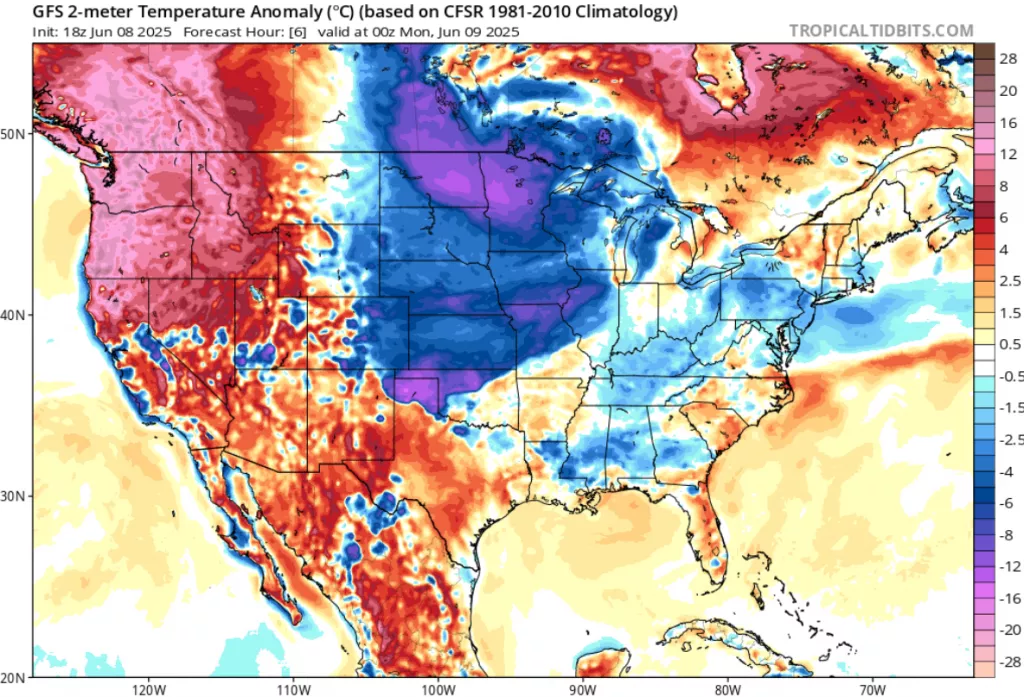
Pacific Heat Wave: Blistering Heat Grips Western North America
A historic heat wave is scorching the Pacific corridor from Mexico to Canada, breaking temperature records across multiple states and provinces. The early June 2025 heat dome is delivering some of the most extreme and widespread heat seen in years, with temperatures surpassing 100°F (38°C) even in high elevations and northern latitudes.
🔥 United States: Death Valley & the Pacific Northwest Scorch
- Death Valley, California peaked at 116°F (46.7°C) – with forecasts suggesting temperatures may exceed 120°F (49°C) in the coming days.
- Unusually high heat has spread as far north as Oregon and Washington, with cities like Portland, Eugene, and Spokane experiencing temperatures well above 100°F (38°C).
- This kind of widespread, early-season heat is abnormal and dangerous, especially for regions not accustomed to prolonged, extreme temperatures.
🇲🇽 Mexico: Record-Challenging Temperatures in the North
- The Mexican state of Chihuahua recorded a searing 48.0°C (118.4°F) — one of the highest temperatures in North America this year.
- Incredibly, 40°C (104°F) was measured at over 7,000 feet (2,100 meters) elevation, indicating a very deep and intense heat dome.
- Minimum temperatures did not fall below 76°F (24.4°C) overnight in some areas, further stressing people, animals, and infrastructure.
🇨🇦 Canada: Early-June Heat Records Threatened
- In Lytton, British Columbia, a maximum of 103°F (39.3°C) was recorded — just shy of Canada’s all-time June records.
- Lytton is notable as the location of Canada’s all-time heat record (49.6°C in June 2021), and its appearance again in extreme heat data underscores the vulnerability of interior British Columbia to heat waves.
🧠 Meteorological Background
This heat wave is driven by a persistent high-pressure ridge (heat dome) stretching across the western U.S. and northern Mexico into western Canada. This atmospheric setup:
- Blocks cooler air masses from entering the region
- Compresses and heats air masses beneath it
- Reduces cloud cover, allowing intense solar radiation to bake the ground
With soil moisture already low, especially in the southwestern U.S. and northern Mexico, temperatures rise even faster due to surface drying.
⚠️ Outlook and Concerns
- Further intensification is possible, especially in California’s deserts and southern Nevada, where temperatures may breach 120°F (49°C) or higher.
- Health risks from heat stroke and dehydration are significant.
- The extreme temperatures increase the risk of wildfires, especially in areas with dry vegetation and wind.
📢 Public Safety Advice
- Stay hydrated and avoid outdoor activity during peak heat.
- Check on elderly neighbors and pets.
- Follow local advisories and heat warnings issued by weather agencies.

Source: https://x.com/extremetemps/status/1931871551793541234/photo/1


























